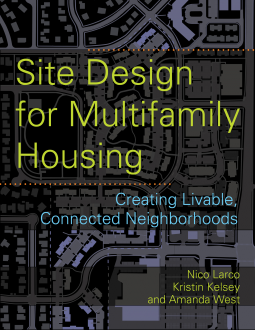
Site Design for Multifamily Housing
Creating Livable, Connected Neighborhoods
by Nico Larco, Kristin Kelsey, and Amanda West
This title was previously available on NetGalley and is now archived.
Buy on Amazon
Buy on BN.com
Buy on Bookshop.org
*This page contains affiliate links, so we may earn a small commission when you make a purchase through links on our site at no additional cost to you.
Send NetGalley books directly to your Kindle or Kindle app
1
To read on a Kindle or Kindle app, please add kindle@netgalley.com as an approved email address to receive files in your Amazon account. Click here for step-by-step instructions.
2
Also find your Kindle email address within your Amazon account, and enter it here.
Pub Date Apr 17 2014 | Archive Date Mar 08 2022
Description
The United States is over eighty percent urbanized, yet over half of the population still lives in suburban settings, characterized by low-density, automobile-dependent development with separated land uses. These disconnected and isolated models of development have been linked to increased greenhouse-gas emissions and reduced quality of life, health, and social connections. In Site Design for Multifamily Housing: Creating Livable, Connected Neighborhoods, the authors explain that creating more livable and vital communities is within reach and the design and development of multifamily housing is a key component to reaching this goal. Multifamily housing is an important component of increasing density, which is necessary to achieve connectivity for compact and walkable development. Multifamily housing in suburban areas presents greater challenges than in urban areas due in part to larger lot sizes and street patterns that are often a mix of cul-de-sac, curved, looped, and dead-end streets. Increasing the livability of these developments is an important first step in affecting the livability of the country as a whole. This handbook introduces planners, developers, and designers to ten key elements of multifamily site design, comparing typical and recommended conditions. Case studies of successful large lot multifamily developments as well as retrofit proposals for existing developments with low internal and external connectivity will demonstrate how the tools in the book can be applied. Examples are drawn from Oregon, California, North Carolina, and Arizona. The ideas and tools in this book, including the planning checklist, code guide, and code summaries, will help users to create more livable, vibrant, and healthy communities.
Available Editions
| EDITION | Paperback |
| ISBN | 9781610915472 |
| PRICE | $40.00 (USD) |



